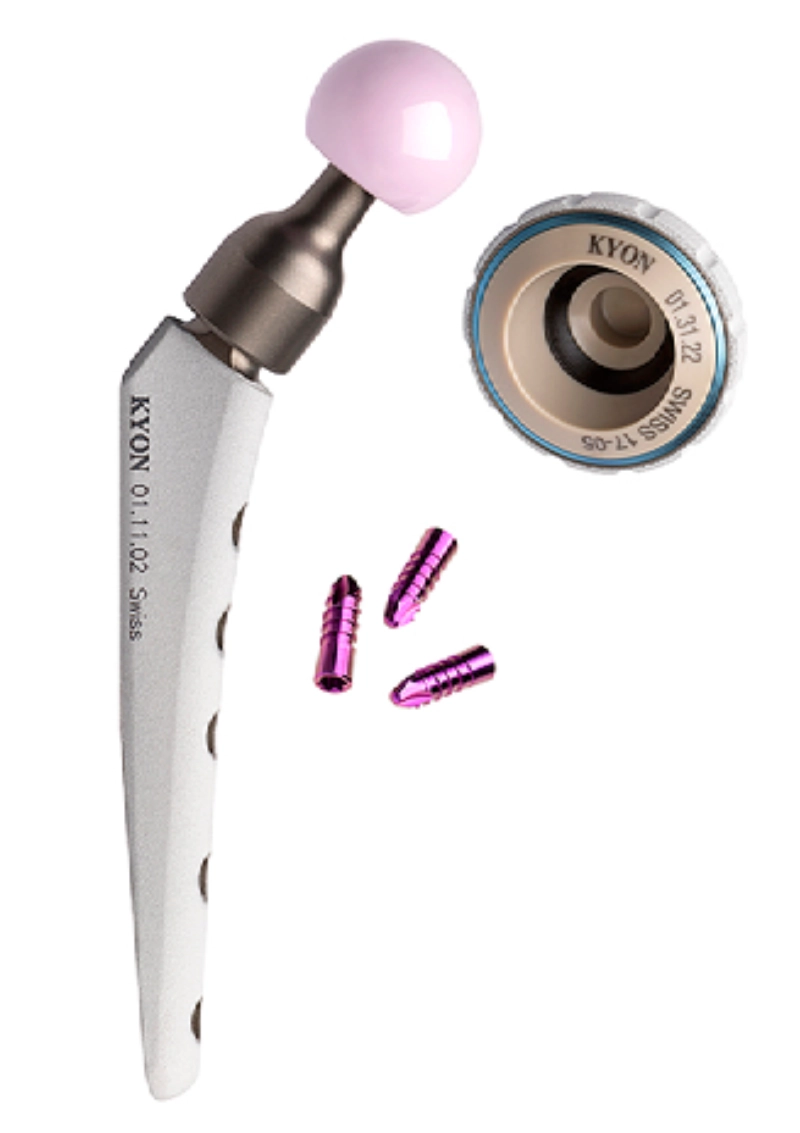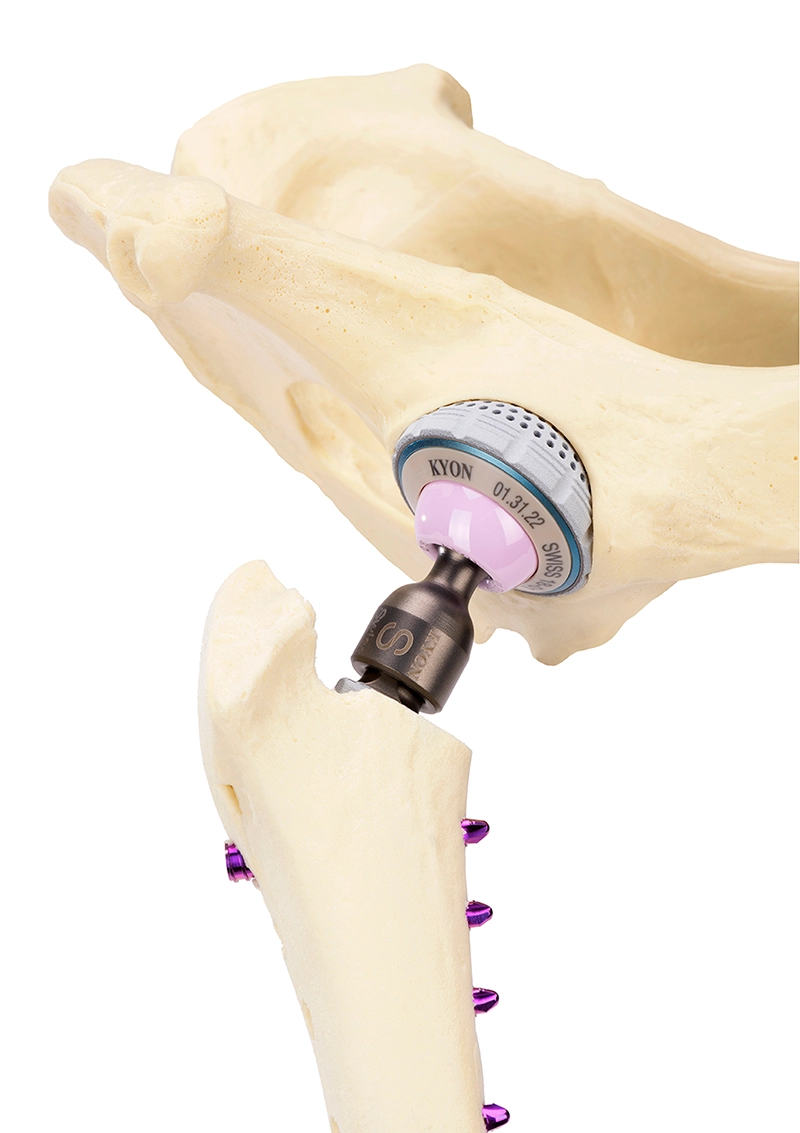Hip disease
Total Hip Replacement is now accepted as best way to manage long term hip disease in dogs and cats. It is a technical and difficult procedure. There are few surgeons experienced enough to offer a high chance of success. Our hip surgeon, Dr Stuart Cooke has performed over 500 Total Hip Replacements and is the lead UK tutor for Kyon, one of the world’s foremost manufacturers of hip implants. Our team offers your pets the best chance of a good outcome from their Total Hip Replacement.
The most common condition requiring THR is hip dysplasia. Surgery can also be indicated with femoral head or neck fractures, pelvic (acetabular) fractures, traumatic hip luxation (dislocation) and Leg Calfe Perthes Disease. Hip disease can remain hidden for a very long time. It is rare that a pet is snappy or makes noises, they suffer in silence. You need to look out for stiffness on getting up, seeming slower or older, reluctance to climb stairs, hesitating before hopping onto the bed or jumping into the car.
The first step in a pet’s investigation is a consultation, this is then followed by investigative tests such as xrays or CT scanning to assess the hips and the other joints such as the lumbosacral junction. The findings are discussed at a discharge consultation and a plan is made, surgical or non-surgical.


